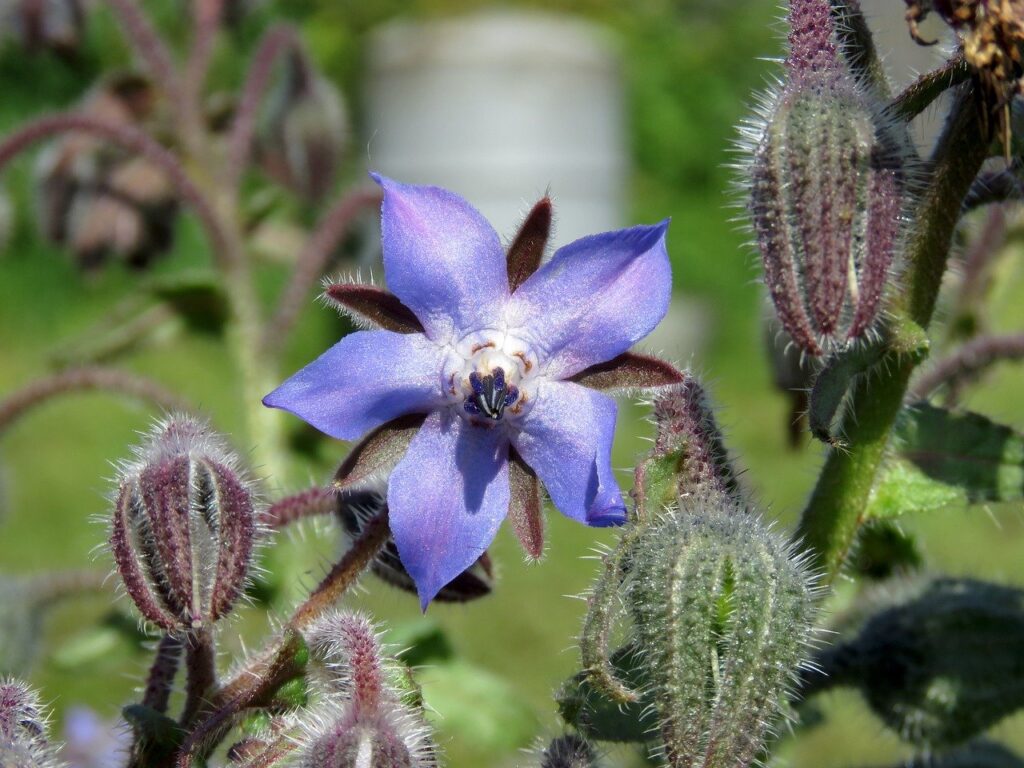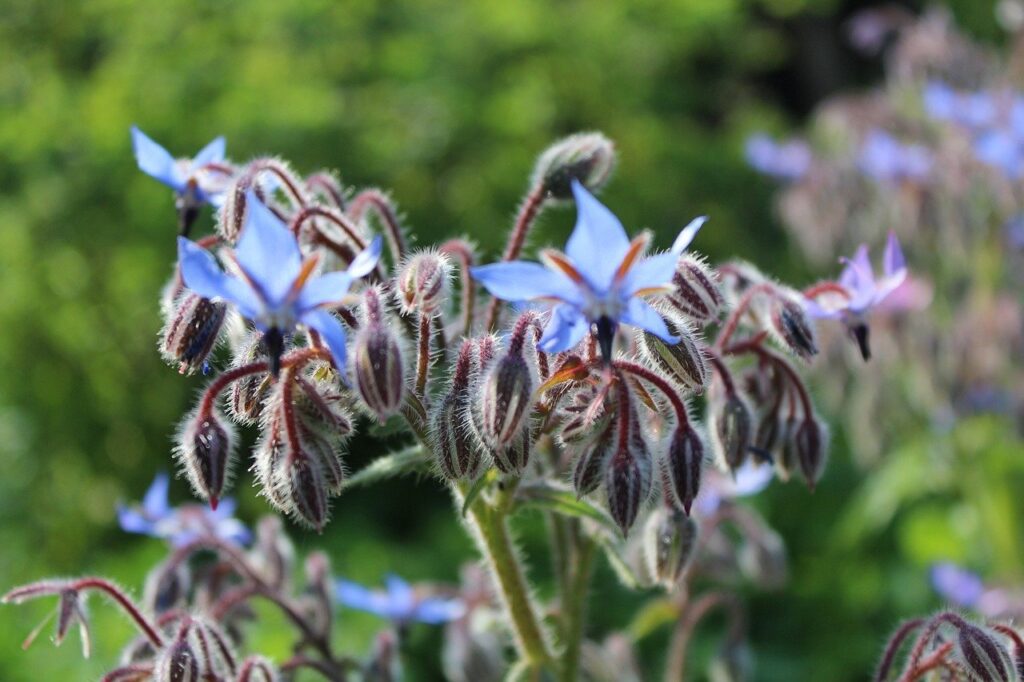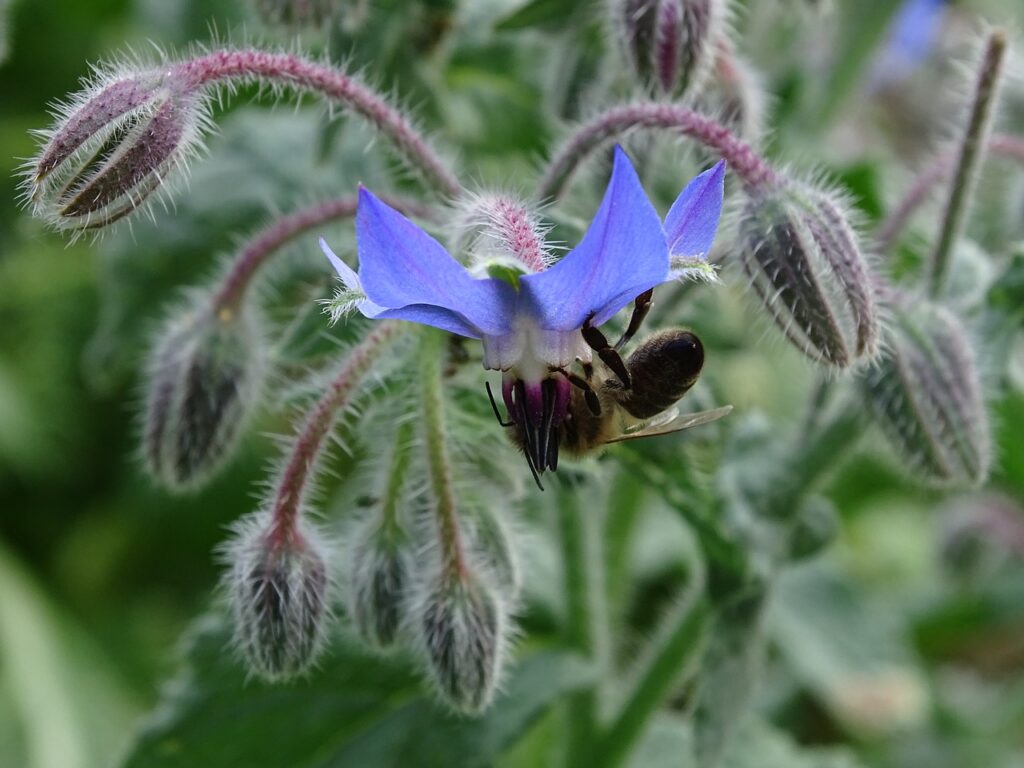
Borage, starflower, bee bush, bee bread
Borage, or Borago officinalis, is an annual flowering herb originating from the Mediterranean. It has spread across the globe, thanks to its ease of care and medicinal properties. With edible leaves and a growing range across the United States, it’s a standby addition for bee gardens.
It is also frequently known as “starflower” because of its five-pointed, star-shaped flowers. The small 1-inch flowers range from bright blue to light lilac colored, and each plant blooms prolifically throughout the spring and summer season.
Borage Benefits
- Highly attractive to bees
- Edible leaves and flowers
- Myriad of medicinal uses
- May repel hornworms
- Self-seeds readily
- Nutrient accumulator

Borage Description
Borage has large oblong leaves and grows in a spreading fashion, up to 2 feet tall. Its leaves and stems have a hairy appearance, and are grayish-green in color. These can be prickly as the plant matures.
The bright blue flowers rise on stalks and attract bees other pollinating insects.
Tips for Germination
In the South, borage grows best in the very early spring, while the temperatures are quite cool. In zones 9, 10, and 11, plant anytime between November through March. In zones 8 and up, plant once the first frost date has passed.
Sow borage 1/4 inch deep, directly into the garden, rather than planting indoors. Its deep taproot makes it a poor candidate for transplanting.
Sow in partial shade to full sun and keep seeds moist once soil temperatures have reached 70F and for up to two weeks afterward until germination occurs.
Provide a thin layer of organic matter, such as compost, to help retain moisture.

Buy Borage Seeds Here
| Species Name: | Borago officinalis |
| Common name(s): | Borage |
| Defining Characteristics: | This herb has blue-green foliage covered in small hairs, with bright blue, star-shaped flowers. |
| Temperature requirement: | Germinates at 70°F and is not hardy |
| Watering frequency: | Keep moist until germination, then water once a week if there is no rainfall or as required |
| Lighting: | Full sun to partial shade |
| Soil type: | Average to sandy soil |
| Growth rate: | Seed Germination: 7-14 days |
| Height: | Grows from 2' to 3' high |
| Origin: | Eastern Mediterranean |
| USDA Hardiness Zone: | Annual, no hardiness zone |
| Toxicity Notes: | No toxicity known or reported For more information please visits the ASPCA list of Toxic and Non-Toxic Plants list of Toxic and Non-Toxic Plants |
| Common Pests: | Slugs and snails, powdery mildew |
Sources
